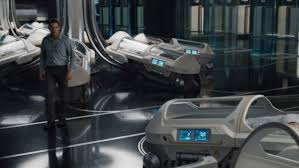
Breaking News
 MELANIA, the film, exclusively in theaters worldwide on January 30th, 2026.
MELANIA, the film, exclusively in theaters worldwide on January 30th, 2026.
 Hospitals murdered COVID patients. The more they killed, the more money they made.
Hospitals murdered COVID patients. The more they killed, the more money they made.
Top Tech News
 This tiny dev board is packed with features for ambitious makers
This tiny dev board is packed with features for ambitious makers
 Scientists Discover Gel to Regrow Tooth Enamel
Scientists Discover Gel to Regrow Tooth Enamel
 Vitamin C and Dandelion Root Killing Cancer Cells -- as Former CDC Director Calls for COVID-19...
Vitamin C and Dandelion Root Killing Cancer Cells -- as Former CDC Director Calls for COVID-19...
 Galactic Brain: US firm plans space-based data centers, power grid to challenge China
Galactic Brain: US firm plans space-based data centers, power grid to challenge China
 A microbial cleanup for glyphosate just earned a patent. Here's why that matters
A microbial cleanup for glyphosate just earned a patent. Here's why that matters
 Japan Breaks Internet Speed Record with 5 Million Times Faster Data Transfer
Japan Breaks Internet Speed Record with 5 Million Times Faster Data Transfer
 Advanced Propulsion Resources Part 1 of 2
Advanced Propulsion Resources Part 1 of 2
 PulsarFusion a forward-thinking UK aerospace company, is pushing the boundaries of space travel...
PulsarFusion a forward-thinking UK aerospace company, is pushing the boundaries of space travel...
 Dinky little laser box throws big-screen entertainment from inches away
Dinky little laser box throws big-screen entertainment from inches away
 'World's first' sodium-ion flashlight shines bright even at -40 ºF
'World's first' sodium-ion flashlight shines bright even at -40 ºF
The hibernation science in 'Passengers' is not far from reality

Before humans travel to another planet—and that day may be coming soon—a question will need to be answered: How will astronauts spend their time on a months- or years-long interplanetary voyage?
In the movie Passengers, which hits theaters today, more than 5,000 people board the starship Avalon on a 120-year journey to a new world called Homestead II. Prior to launch they each enter a "hibernation pod," which, through drugs and environmental controls, puts them into a suspended animation. Essentially, they're meant to sleep through all but four months of the century-long trek.
Currently, humanity is nowhere near ready for the interstellar journey that Jim Preston (Chris Pratt) and Aurora Lane (Jennifer Lawrence) undertake, but this sci-fi hibernation technology is actually grounded in today's reality. NASA is helping to fund the research of SpaceWorks Enterprises, a company that aims to put astronauts into artificial hibernation through a process similar to that depicted in Passengers.

 The Prime Directive is Evil
The Prime Directive is Evil
 Don't Worry About Bitcoin
Don't Worry About Bitcoin

